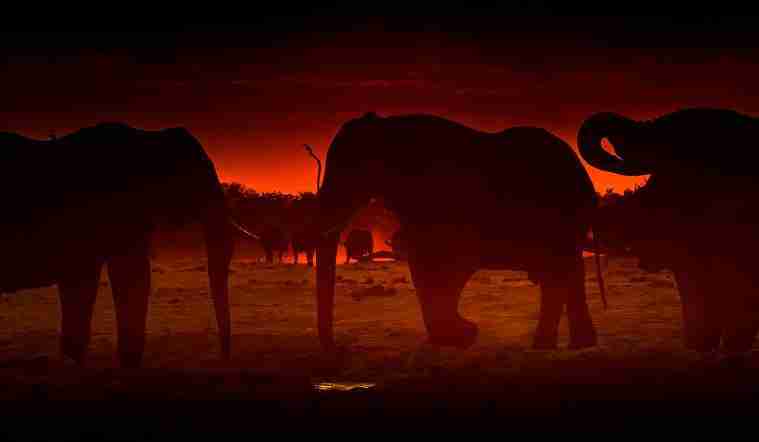A very large state with very few inhabitants, Botswana is an important new touristic reality of the southern part of Africa. Only 3 million people live scattered throughout 581,730 sq km mainly made of flat lands and deserts. The climate is typical of sultry desert places, that is very hot during the day and cold at night. Since this is the southern hemisphere, seasons are reversed in Botswana: summer is in January and winter in August. The “coldest” month is July, when temperatures reach 11°C!
The “land of the Tswana People” – this is the meaning of the name – is today home to descendants of the Bantu tribes, Tswanas and Shonas. Only 14% of the people have Asian or European origins. Mines work is the main economic engine of Botswana, but there are many breeders and shepherds too. Tourism is a brand new economic resource, mainly based upon safari. Botswana is as beautiful as South Africa, as wild as Namibia, and a unique mix of both. In a few words: a place to discover again and again.
Nature and wildlife in Botswana
A flat region, with only one real mountain Mt Tsodilo (1400 m.) and only one real river, Okavango, Botswana looks mostly like a desert. And in fact one of the largest deserts in the world, Kalahari, covers 70% of the nation’s surface. This wild desert of red sand and steppes is shared with Namibia and to both sides of the border receives very very few rain. The only wet area, in the Botswana side of Kalahari, is the large saline of Makgadikgadi.
Although it is considered inhospitable, the desert environment welcomes wildlife. There are reptiles living over there, and also many birds, antelopes, lions and hyenas. You can find small woods, grass and bush along the shores and the large inner delta of river Okavango and on Mt Tsodilo. Many typical African animals live there, too. Elephants, especially. Giraffes, cheetahs, leopards, hippopos, rhinoceros and zebras as well.

Life in Botswana
A little more than 300,000 people live in the only two real cities of Botswana: the capital Gaborone (231,000 inhabitans) and Francistown (115,000). The remaining population lives in small country towns and villages. Since prehistoric ages, the region of Botswana had been a land of hunters who turned to farmers and shepherds during the period of early Middle Ages. In the 17th century, the Bantu people had conquered the place and 200 years later the first European settlers arrived from the colonies of South Africa. In 1885 Botswana became a British colony and in 1966 it got the independence: today it is a Republic within the British Commonwealth. Unlike the nearby South Africa, black and white people have always been in good relationships and have been working together for all the historical changes of the nation.
More information
Botswana is divided into 9 political districts. It has 5 National Parks and about 20 natural reserves plus a special protected area (Okavango-Zambesi) it shares with the neighbour states. Only a few roads are asphalted but there is a efficient railway system.
Airplane is the best means of transport in Botswana and there are many small airports and airstrips throughout the nation. The most important airports are: Sereste Khama International, at Gaborone, Kasane Airport, Francistown Airport and Maun Airport.
In order to enter Botswana you need: passport valid up to 6 months after your arrival, your airplane ticket testifying the period of your stay. If you stay over 90 days you will need a special Visa.
Local money is the Pula: 1 Pula = 0,075 Euros.



